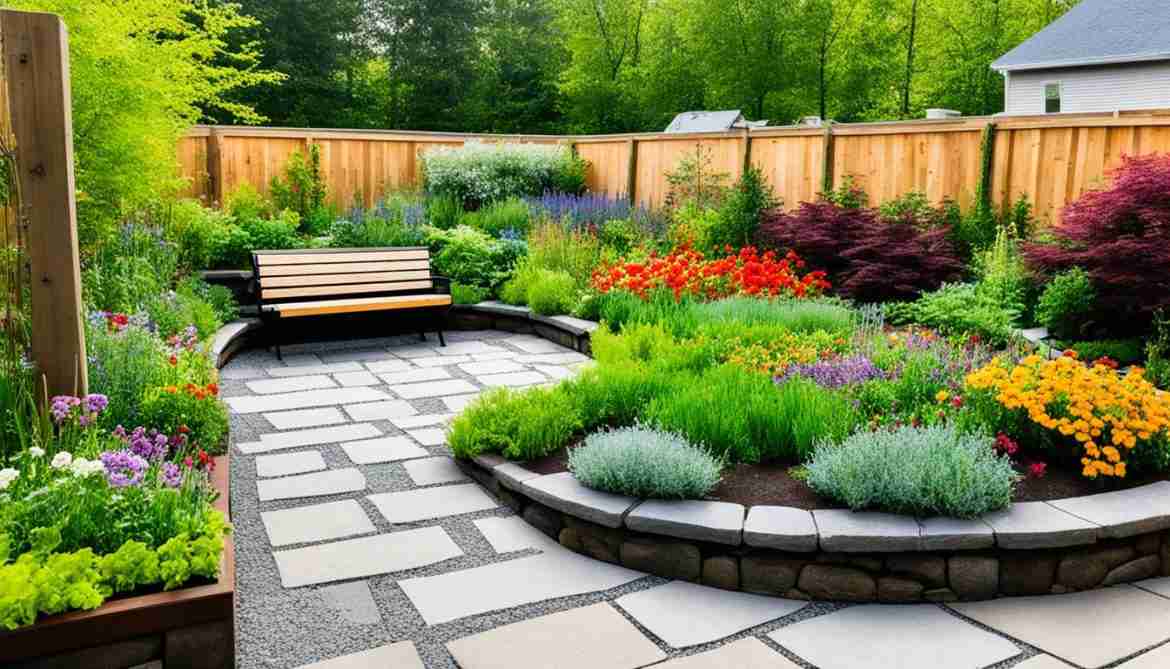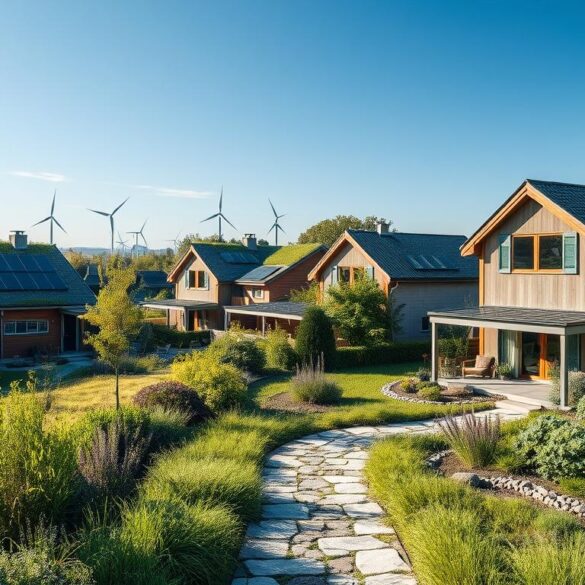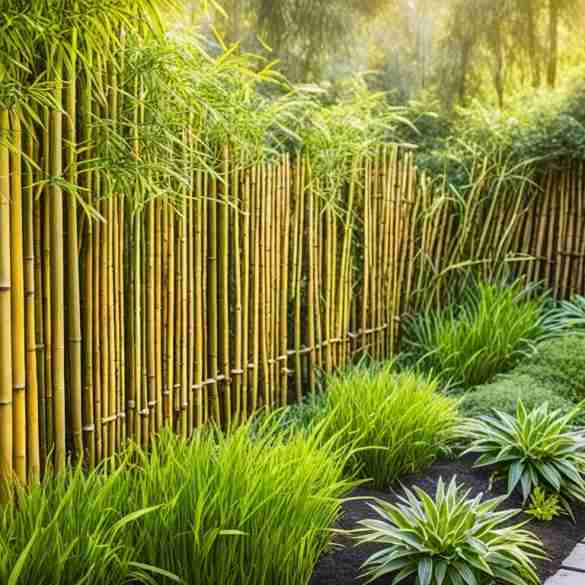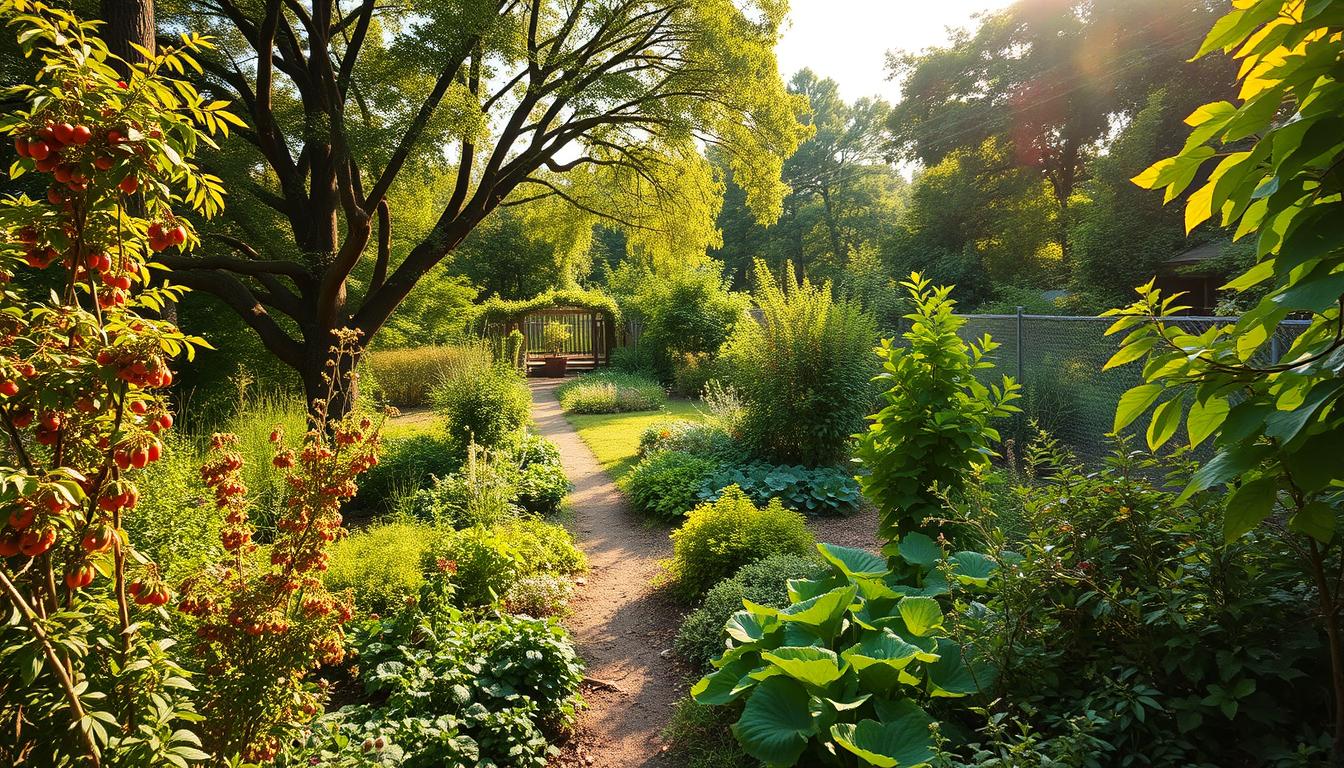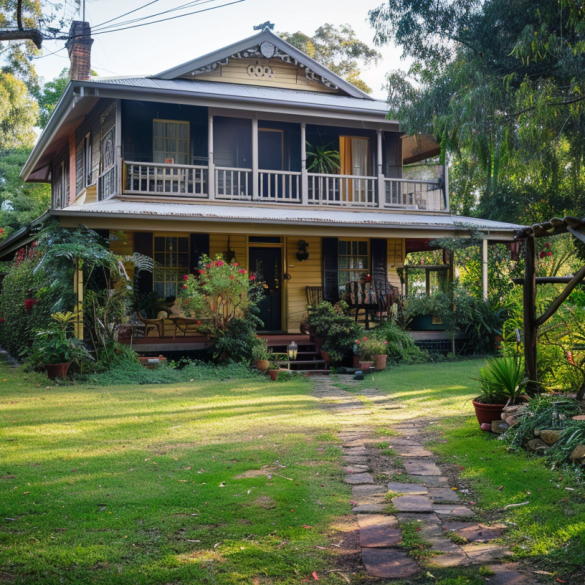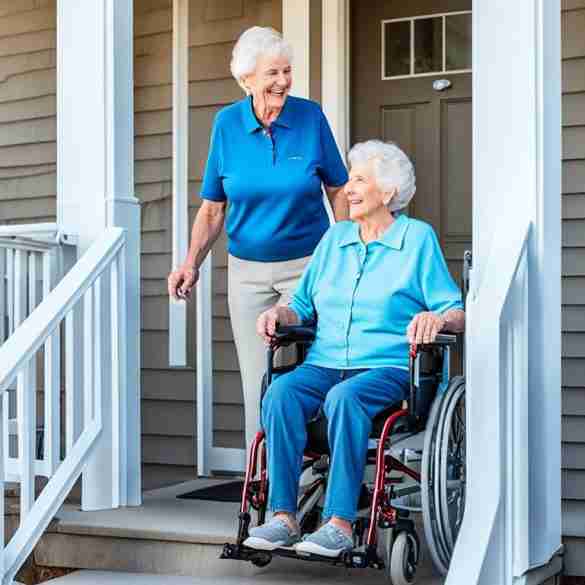Have you thought about what makes a garden great for seniors? It’s key to think about their comfort and safety. A garden that is both easy to use and easy to take care of is important. It helps seniors stay healthy and enjoy their time outside.
When designing a garden for retired folks, remember they may have less energy and move slower. It’s good to have plants that are not hard to take care of. Raised garden beds that are easy to reach and walkways that are solid for walkers or canes are very important1. Don’t forget to add places to rest. This makes the garden a nicer and safer place.
Creating a garden for seniors isn’t just about looks. It’s about setting up a place where everything, from what you plant to how you walk around, is easy for older people. Adding tools like foam grips and wheeled caddies helps a lot. This means seniors can enjoy gardening safely at any age1.
Key Takeaways
- Choose low-maintenance plants like magnolias and Grevilleas to reduce upkeep2.
- Design accessible raised beds to facilitate ease of gardening1.
- Install sturdy pathways and resting spots to enhance comfort and safety1.
- Incorporate senior-friendly gardening tools with ergonomic and foam grips1.
- Add shade and hydration spots to prevent sunburn, heat exhaustion, and dehydration2.
For more insightful information on accessible gardens for seniors, explore further sections in this Sustainable Home Magazine article.
Understanding the Benefits of Gardening for Seniors
Gardening is great for seniors’ health in many ways. It’s a gentle exercise that helps keep muscles strong and the heart healthy3. It also improves balance and coordination, which means fewer falls4.
Working in a garden can make you feel calm and happy3. People feel better after spending time in nature doing garden work4. It challenges the brain, too, with planning and solving problems, which might help prevent memory loss3.
Gardening is not just good for the body and mind, but it’s also a social activity. It brings people together and fights loneliness3. A study in Australia found that garden club members were happier and healthier than those not in a club5.
Working outside in the sun is good for getting vitamin D, which keeps bones strong4. It also helps you sleep better because of the fresh air and physical work4.
Gardening helps seniors feel connected to nature and thankful for life4. It gives them a sense of pride and satisfaction, boosting their self-confidence3. The benefits go beyond just health, making life better for older people5.
To make gardening easier for the elderly, design the space right. Use raised beds for easy access by those with mobility issues3. Add comfy places to sit, so seniors can relax and enjoy their garden3. Choosing plants that don’t need a lot of care can make gardening more fun and less work3. This setup turns a garden into a place that’s both soothing and enjoyable for older folks.
Creating Safe and Accessible Garden Pathways
Making sure garden paths are both safe and easy to use is key for the elderly. They should fit wheelchairs and walkers. This makes sure the garden is open to everyone6.
Pathway Design Tips
For elders, make pathways wide and gently curved to move easily. Good paths are at least 36 inches wide. There should be space to turn around, at points at least 60 inches wide7.
Avoid sharp turns, use smooth curves for easy turning. A 1:20 slope means they’re not too steep, good for wheelchairs6. With this design, movement is simple and safe, especially for those with dementia.
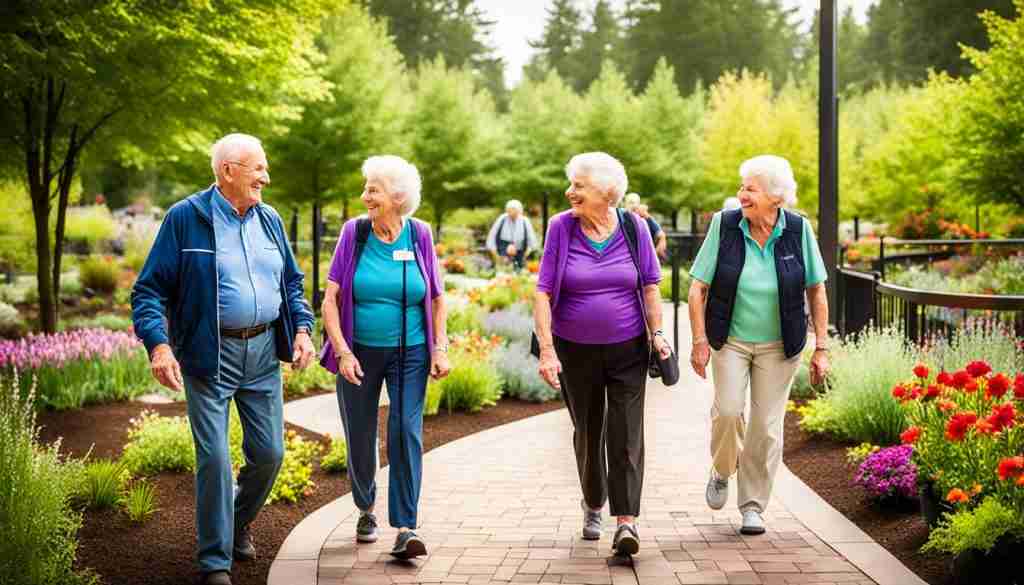
Choosing the Right Materials
Picking the best materials for paths is very important. Gravel with resin is strong and stops slipping, keeping folks safe6. Clay bricks work well too, as they are not slippery and can fit uneven ground6.
Boardwalk-style paths are good with trees. They’re smooth and not slippery, blending with the natural area6. For wheelchair paths, use synthetic turf. It’s lasting but costs more6. Mulch and sand are not good options, they erode and make it hard for wheelchairs6.
Incorporating Handrails and Ramps
Handrails and ramps help a lot with big mobility issues. A 1:20 ramp slope makes areas easy to reach7. It should go where the land is not flat6.
Also, use non-slip surfaces and handrails. They add safety. This is extra important in gardens for people with dementia. They help those who might have trouble moving or seeing8.
Choosing Senior-Friendly Garden Tools
It’s crucial to pick garden tools that are easy for seniors to use. The right tools make gardening safer and more enjoyable for older folks. This is especially true for those with physical challenges or discomfort.
Lightweight Tools
Using lightweight gardening gear is key to avoid strain and harm. Such tools are friendly to seniors, making gardening easier. They cut down on the risk of doing the same movements over and over. Plus, they help seniors keep moving in the garden9.
Ergonomic Handles
Tools with special handles are great for seniors with weak grips. They come with soft foam to make holding them better. Such tools are made for dealing with arthritis or other health issues10. Experts like Marty Ross say these tools are a big help for older gardeners who love their hobby11.
Wheeled Garden Caddies
Wheeled caddies do a lot, like being a seat and storing tools. They make it easy to move heavy things without carrying them. Using garden carts and other aids is helpful, too. They make gardening easier for everyone, including seniors11. And, they help keep things neat while making gardening less tiring and more fun10.
Planting Tips for Elderly Accessible Gardens
An elderly-friendly garden lets seniors enjoy gardening without much strain. It gives tips on choosing plants that are easy to grow, using raised beds, and container gardening.
Easy-to-Grow Plants
Choosing the right plants makes gardening easier and more fun for old folks. Select from perennials, tulips, daffodils geraniums, and veggies like tomatoes and peppers12. These plants are easy to care for and do well in different conditions. They’re great for older gardeners.
Using Raised Beds
Raised bed gardening is good for seniors as it lessens the effort needed. Beds around 3-4 feet high mean no bending over12. They can also have space for seats or tools to help, making things more comfortable13.
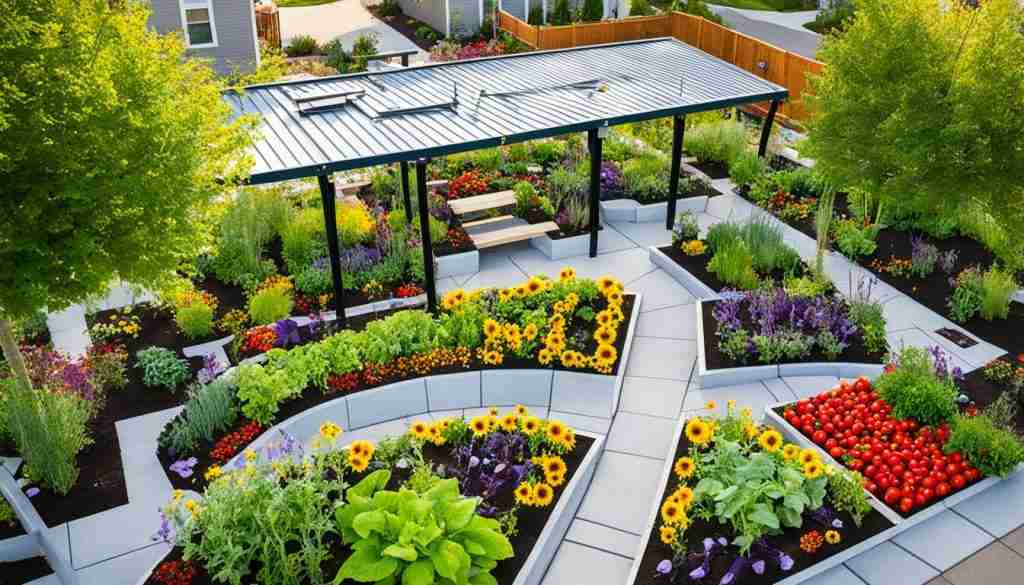
Container Gardening
Container gardening is perfect for those who can’t move much. It lets you use pots or boxes for your plants, which are easy to move. Stands or casters can be used to help move them13. Light tools also make gardening easier on your body14.
By using these tips, you can make a garden that works well for older people. It’s not just pretty; it’s also easy to use. This way, seniors can keep enjoying their love for gardening without much strain.
Garden Design Ideas For Seniors
It’s key to design gardens that are easy for seniors to use and enjoy. Important tips include raised beds and containers to ease pressure on the back and knees15. Raised beds help with better soil water drainage and fewer weeds, perfect for gardens needing less care.
For easy movement, paths should be wide enough for two wheelchairs or people walking together16. Paths with a small slope of 1:20 keep things safer for those using wheelchairs16. Choose path materials that are flat, don’t reflect a lot of light, and won’t get slippery when wet to avoid falls16.
Adding a fence can make your garden extra private and secure17. Fences of steel, PVC, wood, or composite can make different areas for activities or quiet spots. This boosts the garden’s looks and use17.
Elderly gardeners benefit from tools with longer handles and ones that are light to hold16. Synthetic lawns are a smart choice since they need no watering or mowing, saving time and energy17.
To make the garden more enjoyable, add various plants and features. Water elements bring sound and calming motions, as well as help with watering and attracting birds17. Garden lights set different atmospheres and keep the area safe at night17.
Here is a look at different materials for garden pathways:
| Material | Cost | Maintenance | Suitability |
|---|---|---|---|
| Concrete | Low | Low | Highly suitable due to durability |
| Tarmac | Low | Low (sticky in hot weather) | Good |
| Reclaimed bricks | Medium | Moderate (proper installation needed) | Good aesthetic appeal |
| Wood | Medium to High | Relatively short life, slippery when wet | Natural look but less practical |
| Slabs/Flagstones | Medium | Low | Good traction, highly suitable |
Using these designs and materials will make a beautiful and useful space for seniors. Following these tips creates a calm, accessible garden that’s perfect for relaxing and enjoying nature.
Designing Low-Maintenance Gardens
Creating gardens that are easy to care for is key for older adults. It lets them enjoy the outdoors more with less work. Choosing plants that don’t need much attention is a good start. Geraniums, bearded irises, lilies, roses, and flowering shrubs are good picks. It’s also important to stay away from plants that grow too fast or need a lot of care18.
For those with trouble moving, raised gardens and plants in pots on wheels can help. These make it easier to garden without a lot of bending. Tools with long handles, easy grips, and wheels are also great. They help seniors who can’t use their hands well to garden easier18.
Using plants that are used to the area means they need less looking after. These types of plants are good for the earth and don’t need as much weeding. They help save water, which is important for the environment19.
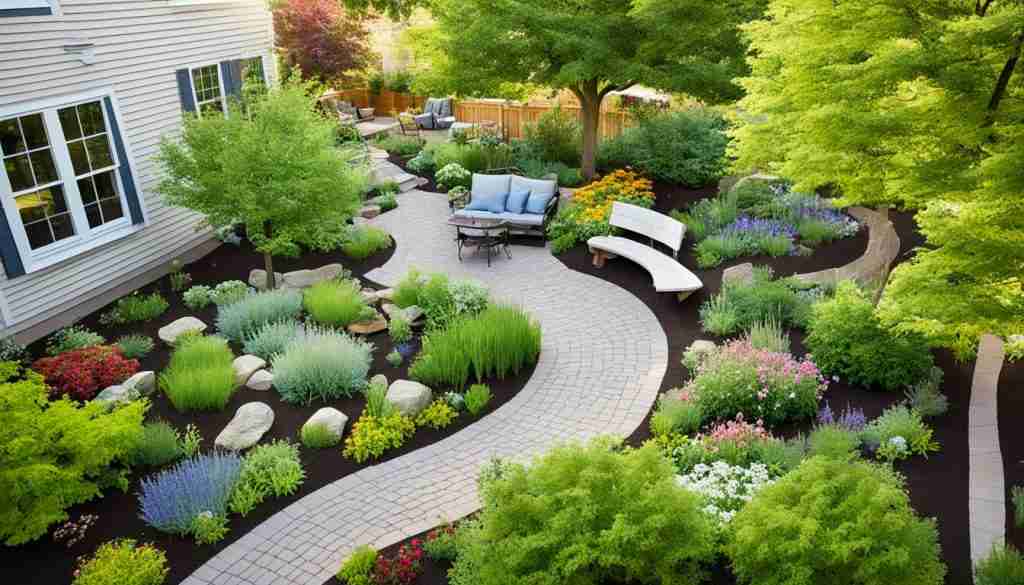
A garden that looks good and is easy to use is beneficial for older adults. Bright lights make the outside safer at night. Lights that turn on when someone walks by can prevent falls20.
Shady areas and comfy places to sit make a big difference for older people. They make the garden a nicer place to be20.
Xeriscaping is a great way to have a beautiful garden that doesn’t need much water. This is good for the budget. It means less work for seniors and more enjoyment of their garden. Adding paths and rocks to the garden cuts down on the care it needs19.
When making a garden for older people, it’s important to think about safety. Gardens should not have sudden drops or rough ground. By choosing low-care features, seniors can get all the joy from a garden without all the hard work20.
Incorporating Sensory Elements in the Garden
Incorporating sensory elements into a garden can make it a therapy space for seniors. This includes colorful plants, flowers that smell nice, and water features for a calm feel.
Choosing Colorful Plants
Picking colorful plants uplifts the elderly and draws them outside. Mixing plants of different colors makes for a beautiful sight. Pathways designed with different feels and looks add to the garden’s charm21. AARP’s tips are helpful for making such gardens22.
Adding Fragrant Flowers
Fragrant flowers can bring back memories and relax the seniors. Plants like lavender and jasmine are great for their lovely scents. The Head Gardener at Airedale General Hospital noted how these plants help dementia patients23. For more tips, check the Sensory Trust’s design guide.
Including Water Features
Adding water, like fountains or ponds, can make a garden more calming. The sound of flowing water relaxes everyone. Woodfield Park’s garden is more welcoming with accessible water features23. To learn more, visit sensory and dementia gardens.
By adding these sensory elements, we can create inclusive garden spaces. This not only helps seniors but also their friends and carers. These gardens become a happy part of their day21.
Enhancing Comfort with Seating and Shade
It’s key to make outdoor areas cozy for seniors. This helps them enjoy the outdoors more, for gardening and just relaxing. Adding comfy seats and shade makes a garden a warm, welcoming place.
Choosing the Right Seating
Good places to sit are important for seniors who need to rest. For 75% of seniors, gardening is a top hobby24. With chairs and benches around, seniors can enjoy 30% more time outside24. Pick seats with armrests and soft cushions to make gardening easier for them.
Providing Ample Shade
Shade helps keep seniors safe from the sun. In a garden, shade cuts the risk of heatstroke by 40% for seniors24. Most older people find big changes in temperature hard to handle. So, it’s important to have plenty of shady places like pergolas or umbrellas. This makes the garden a more soothing place for them.
Creating Quiet Spots
Quiet places are great for thinking, reading, or just being in nature. For the elderly, spending time outdoors means less depression25. Add water features and cozy seats among the greenery to make these spots. Time in sunlight also helps the body make Vitamin D, making bones stronger and reducing the risk of falls25.
Using tips from Sustainable Home Magazine, you can design a garden that’s just right. It provides comfort for gardening and also gives a peaceful place to relax.
Adaptive Gardening Activities for Older Adults
Adaptive gardening makes it easy for seniors to garden. It offers simple ways to enjoy gardening. This way, they feel good about what they do in the garden.
Container Gardening Projects
Container gardening is great for seniors. Plants are grown in containers, easy to reach. It lessens physical effort, perfect for those with pains26. It’s lighter work, letting them move freely27. Raised beds help with water and air for plants28.
Vertical Gardening Ideas
Vertical gardens need less bending. They use up less space. This helps those who can’t move easily26. They also increase what you grow and save space27. Also, using easy-to-hold tools and smooth paths is another plus26.
Simple DIY Garden Decorations
Simple DIY garden decorations are fun and personal. They include making plant markers and painting pots. These suit the skills and needs of seniors28. Besides having fun, they make the garden look good.
Adding these ideas can make gardening easier and fun for older people. It keeps their needs in mind, offering joy and healing262827.
Conclusion
Designing garden spaces for seniors needs special care. It mixes safety, easy use, and fun. You should make paths wider for walkers or wheelchairs. Use plants that are easy to take care of. You can also try planting in containers or raised beds. This makes it easier for seniors to garden29.
Good garden planning can raise a home’s value by up to 12%30. It helps seniors save money, too. Gardens can block wind and provide shade. An example is the Yinian Rooftop Garden in Chongqing. They have safe features like handrails and special community areas31. Such projects show gardens can be both beautiful and safe.
The main aim is to make a place where seniors can enjoy and feel good. By making gardens that are easy to use, you turn them into peaceful spots for seniors. Make sure the garden is safe and comfortable. Then it will be a source of joy and inspiration for elderly garden lovers.

